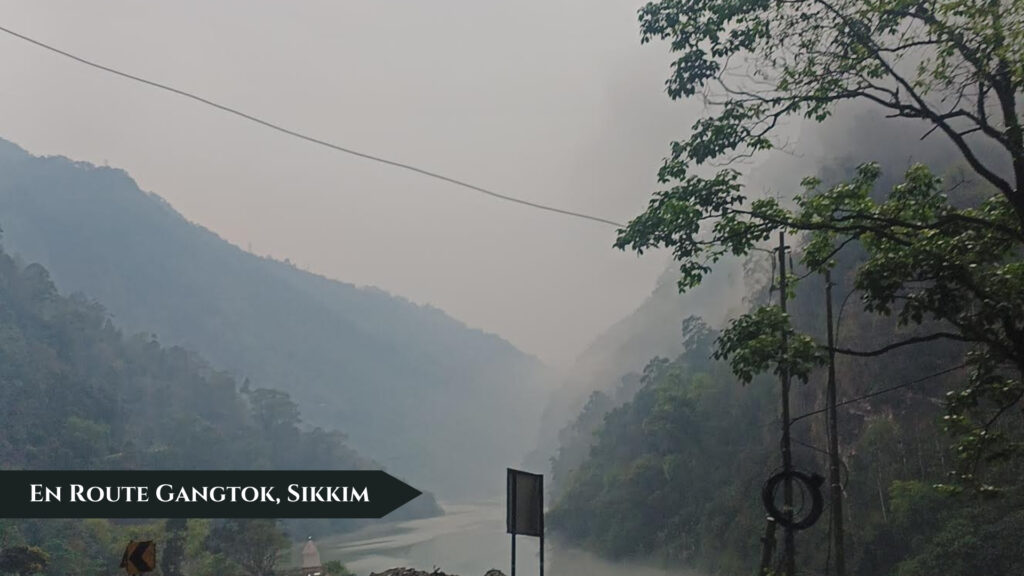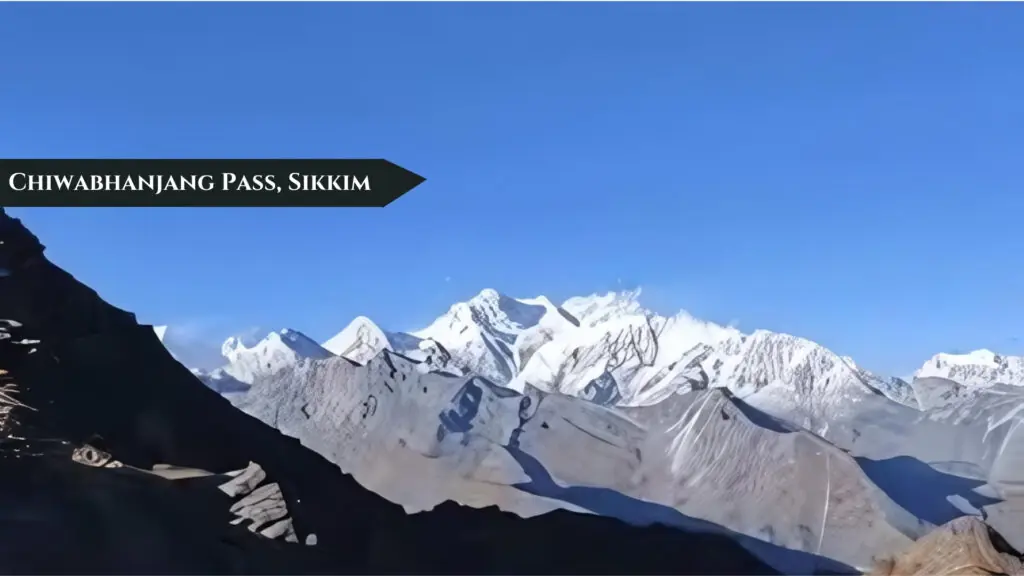Cho La Pass is a high mountain pass located in the Indian state of Sikkim, part of the majestic Himalayan mountain range. At an altitude of 15,700 feet (4,785 meters), it serves as a significant trekking route and offers breathtaking views of the surrounding snow-capped mountains and valleys.
The pass is part of the popular trekking route between Gokyo and the Everest Base Camp, drawing adventure enthusiasts who are keen to experience the unique culture of the region and enjoy the stunning landscapes.
Significance of Cho La Pass
Cho La Pass holds historical, strategic, and trekking significance. Historically, it has been a route used by local traders and herders. Today, it remains a crucial point for trekkers exploring the Everest region, enhancing the adventure tourism in the area.

The pass is also of great natural significance. It serves as a challenging yet rewarding route for trekkers, offering panoramic views of the Himalayan peaks and glaciers. The presence of trekkers and the natural beauty of the pass make it a significant point of interest for those intrigued by high-altitude trekking and mountain landscapes.
Cho La Pass Border Country
Cho La Pass is located on the border between Nepal and the Tibet Autonomous Region of China. The border is clearly demarcated, and trekkers can witness the rugged terrain that separates the two regions.
The pass is accessible by a scenic trek through winding mountain trails. On a clear day, you can witness the majestic peaks of the eastern Himalayas and the vibrant trekking activities.
Cho La Pass Trekking History
Cho La Pass has played a direct role in trekking history, especially as part of the route to Everest Base Camp. The pass is a significant challenge for trekkers, requiring careful navigation and acclimatization.
The pass has been a popular route for trekkers since the early days of Everest expeditions, witnessing numerous adventurers crossing its rugged terrain. These events have cemented Cho La’s reputation as a strategically important and challenging region in the Himalayas.
How to Reach Cho La Pass
To reach Cho La Pass, you need to travel to Lukla, the starting point for the Everest Base Camp trek. Lukla is well-connected by flight from Kathmandu, the capital of Nepal.

From Lukla, Cho La Pass is part of the trekking route that includes Namche Bazaar, Gokyo, and eventually the Everest Base Camp. The trek involves several days of hiking through lush forests, rugged terrains, and high-altitude passes, offering glimpses of the majestic Himalayan peaks. It is important to note that proper acclimatization is essential to avoid altitude sickness.
Best Time to Visit Cho La Pass
The best time to visit Cho La Pass is during the pre-monsoon (March to May) and post-monsoon (September to November) seasons when the weather is relatively mild and the trails are accessible. During these months, the skies are clear, providing stunning views of the surrounding mountains and valleys.
The winter months (December to February) see heavy snowfall, and the pass is often closed due to the harsh weather conditions. However, the snow-covered landscape during this time is equally mesmerizing for those who can brave the cold.
Cho La Pass Height
Cho La Pass is located at an altitude of 15,700 feet (4,785 meters) above sea level. This makes it one of the highest trekking passes in the world, requiring trekkers to acclimatize properly to avoid altitude sickness.
- Cho La Pass height in feet is 15,700 feet.
- Cho La Pass height in meters is 4,785 meters.
My Experience of Cho La Pass
Visiting Cho La was a remarkable experience. The journey from Lukla through the winding trails was an adventure in itself, with stunning views of the mountains and valleys. The air became noticeably thinner as we ascended, and the temperature dropped significantly.
Reaching the pass, the sight of the harsh terrain and the surrounding peaks was surreal. The sense of adventure and the natural beauty of the place were palpable. The highlight was seeing the snow-covered peaks and the rugged terrain up close, making it a memorable trek.
Things to Keep in Mind While Visiting Cho La Pass
- Permits: Trekkers need to obtain special permits to access the Everest region. These can be obtained through registered tour operators in Kathmandu.
- Acclimatization: The high altitude requires proper acclimatization. Spend a few days in Namche Bazaar before heading to Cho La to adjust to the altitude.
- Weather: The weather can change rapidly. Dress in layers and carry warm clothing, even during the summer months.
- Physical Fitness: The high altitude and thin air can be challenging. Ensure you are physically fit and consult a doctor if you have any health concerns.
- Respect the Environment: Do not litter, and respect the local customs and traditions. The area is of significant natural and cultural importance.
History of Cho La Pass
Cho La has been a vital trekking route for decades, linking the Gokyo region with the Everest Base Camp. Its strategic importance was highlighted during the early Everest expeditions.
In recent years, the pass has become a popular route for trekkers, marking a significant milestone in adventure tourism. The popularity has boosted trekking and tourism in the region, making Cho La a vital natural and cultural link between the trekking communities.
Other Mountain Passes in Sikkim
If you liked the Cho La Pass, do not forget to explore these other mountain passes in Sikkim. These passes are famous for their stunning views and adventurous journeys through the Himalayas. These passes are important routes connecting different areas of the state, offering travelers a chance to experience the rugged beauty of the region while traversing through valleys and across peaks.
Nathu La Pass in Sikkim

Nathu La Pass offers beautiful mountain views and has historical significance as a trade route between Sikkim and Tibet. Situated at high altitude, it provides visitors with panoramic vistas of snow-capped peaks and opportunities to learn about the cultural exchanges that have taken place along its ancient path.
Donkia / Dongkha La Pass In Sikkim

Donkia (Dongkha) La Pass is a challenging trek with great mountain views, located near the Bhutan border. Trekkers can enjoy the rugged beauty of the terrain and experience the calmness of the surrounding wilderness while crossing this pass on their journey.
Chiwabhanjang / Chio Bhanjyang Pass In Sikkim

Chiwabhanjang (Chio Bhanjyang) Pass is the starting point for the Goecha La trek, known for its natural beauty. Travelers embarking on this trek can expect to encounter rich forests, alpine meadows, and stunning vistas as they make their way through this insta-worthy pass.
Goecha La Pass In Sikkim

Goecha La Pass is a popular trekking spot with amazing views of Mt. Kanchenjunga and diverse landscapes. Trekkers can drown themselves in the calmness of the Himalayas while marveling at the amazing beauty of the surrounding peaks and valleys.
Naku La Pass In Sikkim

Naku La Pass is a high-altitude pass with scenic trails and strategic importance along the Sikkim-Tibet border. Travelers can enjoy panoramic views of the surrounding mountains and valleys while exploring this rugged terrain, which has witnessed centuries of history and cultural exchange.
Conclusion
Cho La Pass is a must-visit for those interested in high-altitude trekking, natural beauty, and adventure. With its strategic importance, stunning landscapes, and rich history, it offers a unique and unforgettable experience of Sikkim.
If you are planning a trek to the Everest region, make sure to include Cho La in your itinerary. Prepare well, respect the environment and local customs, and enjoy the remarkable journey. The memories of this high-altitude adventure will stay with you for a lifetime!
FAQs Related to Cho La Pass
1. What is the best time to visit Cho La Pass?
The best time to visit Cho La is during the pre-monsoon (March to May) and post-monsoon (September to November) seasons when the weather is clear and the trails are accessible.
2. Who can visit Cho La Pass?
Trekkers from around the world can visit Cho La Pass. Proper permits are required, which can be arranged through registered tour operators in Kathmandu.
3. How high is Cho La Pass?
Cho La Pass is located at an altitude of 15,700 feet (4,785 meters) above sea level.
4. How to reach Cho La Pass?
Cho La Pass can be reached as part of the trekking route from Lukla to Everest Base Camp, passing through Namche Bazaar and Gokyo.
5. What is the significance of Cho La Pass?
Cho La Pass holds trekking significance as part of the route to Everest Base Camp, offering stunning views and challenging terrain.
6. Is Cho La Pass open all year round?
No, Cho La Pass is usually closed during the winter months (December to February) due to heavy snowfall.
7. What should I carry while visiting Cho La Pass?
Warm clothing, necessary permits, identification documents, basic medical supplies, sunglasses, sunscreen, snacks, and water.
8. Is photography allowed at Cho La Pass?
Yes, photography is generally allowed, but always follow the instructions of local authorities regarding restricted areas.
9. Can I experience altitude sickness at Cho La Pass?
Yes, due to the high altitude, visitors may experience altitude sickness. Proper acclimatization is essential.
10. Are there any accommodations available at Cho La Pass?
There are no accommodations at Cho La Pass itself. Trekkers usually stay in lodges and tea houses along the trekking route.




